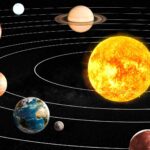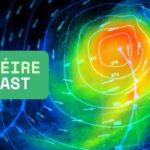
Dozens More Galaxies Could Be Orbiting the Milky Way

Astronomers at Durham University have used cutting-edge simulations to predict that the Milky Way could be surrounded by up to 100 more satellite galaxies than previously believed — most of them extremely faint and until now undetectable.
Presented at the National Astronomy Meeting 2025, taking place this week in Durham, the study suggests many of these “orphan” galaxies have gone unnoticed because they’ve been stripped of their dark matter halos by the gravitational pull of the Milky Way.
Using the most detailed simulations to date and a powerful analytical model known as GALFORM, the researchers tracked the formation and evolution of these elusive dwarf galaxies. Their findings indicate that as many as 80 to 100 small galaxies could be orbiting close to our own, far more than the 60 currently known.
Lead researcher Dr Isabel Santos-Santos said these orphaned galaxies should still exist in the real Universe, even if they have vanished from most previous simulations. “One day soon we may be able to see these ‘missing’ galaxies,” she said, “which would be hugely exciting and could tell us more about how the Universe came to be as we see it today.”
The results back up the Lambda Cold Dark Matter (LCDM) model — the leading theory for how galaxies form and evolve. It suggests the Universe is made up of just 5% ordinary matter, with the rest consisting of dark energy and dark matter. Dwarf galaxies, like the predicted satellites, are believed to form inside dark matter halos.
Co-author Professor Carlos Frenk called the findings “a remarkable success” for LCDM. “It also shows the power of physics and mathematics,” he said, adding that supercomputer-driven predictions are now helping guide real-world astronomical searches.
Irish skywatchers won’t be able to spot these faint galaxies with the naked eye, but astronomers hope that future instruments — such as the Rubin Observatory’s LSST camera — will help reveal these hidden companions in the coming years.
The research is supported by the European Research Council and the UK’s Science and Technology Facilities Council.
Share this WeathÉire story:





















